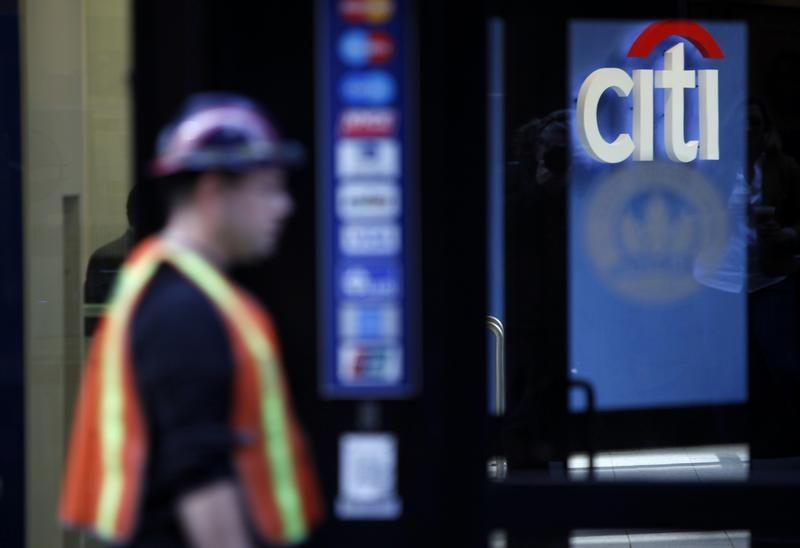
Citigroup’s credit trading division, traditionally a calling card of the firm, has shrunk considerably in the past year following steep cuts in resources and a slump in revenues.
Citi recorded a 21% decline in first-half revenue to US$1.5bn in “spread products and other fixed income”, a group of businesses that includes credit trading. That was the bank’s lowest haul since it started breaking out figures eight years ago. It also follows a 31% plunge in first-half 2022 from a peak of US$2.8bn two years earlier.
The revenue slide comes in the wake of Citi suffering a series of high-profile departures in credit trading and the bank slashing the amount of financial resources it deploys to the unit. The US lender has reduced headcount in credit trading by about 20% over the past year, according to sources familiar with the matter, and risk-weighted assets associated with the business by 30% following pressure on senior management to rein in costs in its investment bank.
Rivals say the scale of the cuts will, in the months ahead, hamstring Citi’s credit trading business, which buys and sells corporate bonds, derivatives and other products on behalf of clients. But sources close to the business say the overhaul was necessary following a sharp decline in credit trading revenues across the industry and a shift towards greater electronic trading in these markets.
"As a global leader in credit trading, we are positioned for success," a Citi spokesperson told IFR. "We continue to invest in our people and technology as the market evolves."
Rapid interest rate hikes and growing fears of recession made 2022 a tough year for credit trading divisions. The top 30 banks and market makers made US$18.3bn in G-10 flow, structured and exotic credit trading last year, according to data provider Vali Analytics, down from a peak of US$25.2bn in 2020.
Many banks have reported an improved environment in 2023 as hopes grow that the US Federal Reserve is nearing the end of its rate-hiking cycle. Bank of America, Goldman Sachs and JP Morgan are among those to draw a contrast with Citi by reporting a rebound in credit trading in the first half of 2023. Vali Analytics forecasts the industry revenue pool to rise to US$21.9bn this year.

Moving the needle?
Some firms have trimmed headcount this year and most continue to invest heavily to bring greater automation to the traditionally human-centric world of corporate credit trading. Data provider Coalition Greenwich said 40% of US investment-grade corporate bonds were traded electronically in 2022, up from 26% in 2019, while high-yield e-trading volumes have more than doubled over that period.
But no other bank has made the kind of swingeing cuts that Citi has implemented over the past 12 months. Many of those landed in the second half of 2022, although there have still been some notable departures this year. Senior traders heading for the exits lately include Sam Berberian, head of North American corporate cash trading, head of investment-grade trading Matthew Zimmerman and Nick Gray, a senior financials trader in Europe.
That follows a wave of departures from Citi’s European leveraged loan trading team earlier this year, which sources say Citi is reconfiguring to focus more on loan portfolio trading and supporting the collateralised loan obligations business. People have also left the high-yield bond desk and the Latin American credit trading desk in New York.
Most of the RWA cuts have focused on the often capital-intensive businesses of structured and exotic credit trading, sources say, where Citi has long been a prominent player.
“They’ve lost a number of key people … that are really moving the needle,” said the head of credit trading at a rival firm. “The problem is, if you become subscale, you’re dead. It’s a fixed cost base, there are economies of scale. If you don’t like the returns in credit today … you’re going to like it even less if you’ve got roughly all the cost and infrastructure and [much smaller] revenues.”
Citi is comfortable with staffing levels and the return profile in its credit business, sources said. The bank has continued to make external hires this year even as staff have left, the sources said, while its investment in technology has also increased.
Overhaul
Citi’s decision to cut credit comes in the wake of chief executive Jane Fraser announcing plans to overhaul the bank’s sprawling operations. Fraser has highlighted Citi's position as the number two bank in fixed income by revenue, but she has also emphasised the importance of profitability and the need to "optimise capital usage" in its global markets division.
That drive prompted Citi to start paring back credit trading activities last year. The returns for those businesses have paled in comparison lately to macro trading activities in products linked to interest rates and currencies, which have boomed over the past year as the Fed has tightened policy following a lean period that lasted much of the previous decade.
Strong performance in these macro businesses more than offset Citi's sharp decline in credit trading last year, helping the bank to increase its overall fixed-income revenues by 13% to US$14.6bn. The bank has devoted more resources to rates trading this year, including building its Japan trading desk ahead of an expected increase in activity.
Rates and currencies accounted for a record 81% of Citi’s fixed-income revenues in the first half of 2023, up from 67% two years earlier, a sign of the increasing dominance of the macro business – and the declining influence of spread products.